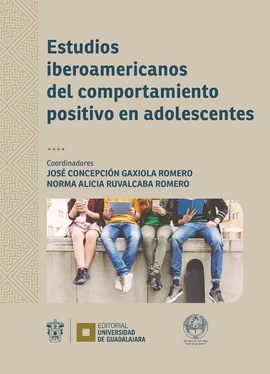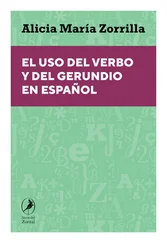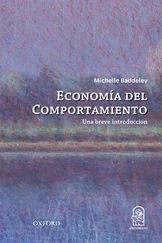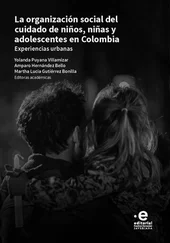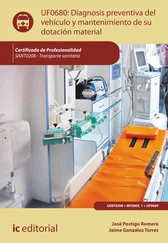1 ...6 7 8 10 11 12 ...16 Francisco, R., Loios, S. y Pedro, M. (2016). Family functioning and adolescent psychological maladjustment: The mediating role of coping strategies. Child Psychiatry & Human Development, 47 (5), 759-770.
Frydenberg, E. y Lewis, R. (2000). Escalas de Afrontamiento para Adolescentes. Madrid: Ediciones TEA.
Hampel, P. y Petermann, F. (2006). Perceived stress, coping, and adjustment in adolescents. Journal of Adolescent Health, 38 (4), 409-415.
Hulme, D. y McKay, A. (2007). Identifying and measuring chronic poverty: Beyond monetary measures? En N. Kakwani y J. Silber (eds.). Many dimensions of poverty (pp. 187-214). NuevaYork: Palgrave, McMillan.
Instituto Nacional de Psiquiatría y Administración Federal de Servicios Educativos del D. F. (2006). Cuestionario para Estudiantes 2006. México.
Kwon, J. A. y Wickrama, A. S. (2014). Linking family economic pressure and supportive parenting to adolescent health behaviors: two developmental pathways leading to health promoting and health risk behaviors. Journal of Youth and Adolescence, 43 (7), 1176-1190.
Luthar, S. y Latendresse, S. (2005). Comparable “risks” at the socioeconomic status extremes: preadolescents’ perceptions of parenting. Development and Psychopathology, 17 (1), 207-230.
Malecki, C. K. y Demaray, M. K. (2006). Social support as a buffer in the relationship between socioeconomic status and academic performance. School Psychology Quarterly, 21 (4), 375-395.
Márquez, M. E. (2008). Correlatos familiares, de crianza e implicación parental como predictores del rendimiento académico. Tesis inédita de doctorado. México: UNAM.
Martínez, A. (2004). Evaluación de la confiabilidad de dos escalas de apoyo social: la escala de apreciación social y la escala de apoyo social. Tesis inédita de licenciatura. México: UNAM.
Masten, A. S. (2014). Global perspectives on resilience in children and youth. Child Development, 85 (1), 6-20.
Masten, A. S. (2016). Resilience in the context of ambiguous loss: A Commentary. Journal of Family Theory and Review, 8 (3), 287-293.
Masten, A. S. y Narayan, A. J. (2012). Child development in the context of disaster, war, and terrorism: Pathways of risk and resilience. Annual Review of Psychology, 63, 227-257.
Masten, A. S. y Monn, A. R. (2015). Child and family resilience: A call for integrated science, practice, and professional training. Family Relations, 64 (1), 5-21.
Morales-Ramos, M. A. y Morales-Ramos, E. (2008). La teoría de conjuntos difusos como una opción para medir la pobreza: El caso de México. El Trimestre Económico, 641-662.
O’Dougherty, M., Masten, A. y Narayan, A. (2013). Resilience processes in development: four waves of research on positive adaptation in the context of adversity. En S. Goldstein y R.B. Brooks (eds.). Handbook of Resilience in Children (pp. 15-37). Boston: Springer.
OMS (2017). Global Monitoring Report [informe mundial de seguimiento de la cobertura sanitaria universal 2017]. Recuperado de https://www.who.int/es/news-room/detail/13-12-2017-world-bank-and-who-half-the-world-lacks-access-to-essential-health-services-100-million-still-pushed-into-extreme-poverty-because-of-health-expenses.
OMS (2018). Adolescentes: riesgos para la salud y soluciones. Recuperado de https://www.who.int/es/news-room/fact-sheets/detail/adolescents-health-risks-and-solutions.
Palomar, J. (2007). The subjective dimension of poverty: A psychological viewpoint. En N. Kakwani y J. Silber (eds.). Many dimensions of poverty (pp. 75-85). Nueva York: Palgrave, McMillan.
Ponnet, K., Wouters, E., Goedemé, T. y Mortelmans, D. (2016). Family financial stress, parenting and problem behavior in adolescents: An actor-partner interdependence approach. Journal of Family Issues, 37 (4), 574-597.
Rivera, M. E. y Andrade, P. (2010). Escala de evaluación de las Relaciones Intrafamiliares (ERI). Uaricha, Revista de Psicología, 14, 12-29.
Rutter, M. (2007). Resilience, competence, and coping. Child Abuse & Neglect, 31 (3), 205-209.
Rutter, M. (2013). Annual research review: Resilience-clinical implications. Journal of Child Psychology and Psychiatry, 54 (4), 474-487.
Santiago, C. D., Etter, E. M., Wadsworth, M. E. y Raviv, T. (2012). Predictors of responses to stress among families coping with poverty-related stress. Anxiety, Stress & Coping, 25 (3), 239-258.
Santiago, C. D., Wadsworth, M. E. y Stump, J. (2011). Socioeconomic status, neighborhood disadvantage, and poverty-related stress: Prospective effects on psychological syndromes among diverse low-income families. Journal of Economic Psychology, 32 (2), 218-230.
Schwartz, S. J., Unger, J. B., Baezconde-Garbanati, L., Benet-Martínez, V., Meca, A., Zamboanga, B. L. y Soto, D. W. (2015). Longitudinal trajectories of bicultural identity integration in recently immigrated Hispanic adolescents: Links with mental health and family functioning. International Journal of Psychology, 50 (6), 440-450.
Sheidow, A. J., Henry, D. B., Tolan, P. H. y Strachan, M. K. (2014). The role of stress exposure and family functioning in internalizing outcomes of urban families. Journal of Child and Family Studies, 23 (8), 1351-1365.
Southwick, S. M., Bonanno, G. A., Masten, A. S., Panter-Brick, C. y Yehuda, R. (2014). Resilience definitions, theory, and challenges: interdisciplinary perspectives. European Journal of Psychotraumatology, 5 (1), 3-14.
Stice, E., Ragan, J. y Randall, P. (2004). Prospective relations between social support and depression: Differential direction of effects for parent and peer support? Journal of Abnormal Psychology, 113 (1), 155-159.
Taylor, R. D. (2010). Risk and resilience in low-income African American families: Moderating effects of kinship social support. Cultural Diversity and Ethnic Minority Psychology, 16 (3), 344-351.
Traub, F. y Boynton-Jarrett, R. (2017). Modifiable resilience factors to childhood adversity for clinical pediatric practice. Pediatrics, 139 (5), 1-14.
Unicef (2018). Los derechos de la infancia y adolescencia en México. Recuperado de https://www.unicef.org/mexico/media/1791/file/SITAN-UNICEF.pdf.
Vaux, A., Phillips, J., Holly, L., Thomson, B., Williams, D. y Stewart, D. (1986). The Social Support Appraisals (SS-A) Scale: Studies of reliability and validity. American Journal of Community Psychology, 14 (2), 195-218.
Wadsworth, M. y Compas, B. (2002). Coping with family conflict and economic strain: the adolescent perspective. Journal of Research on Adolescence, 12 (2), 243-247.
Wadsworth, M. E., Raviv, T., Santiago, C. D. y Etter, E. M. (2011). Testing the adaptation to poverty-related stress model: Predicting psychopathology symptoms in families facing economic hardship. Journal of Clinical Child & Adolescent Psychology, 40 (4), 646-657.
Wadsworth, M. E., Rindlaub, L., Hurwich-Reiss, E., Rienks, S., Bianco, H. y Markman, H. J. (2013). A longitudinal examination of the adaptation to poverty-related stress model: Predicting child and adolescent adjustment over time. Journal of Clinical Child & Adolescent Psychology, 42 (5), 713-725.
Youngblade, L., Theokas, C., Schulenberg, J., Curry, L., Huang, I. y Novak, M. (2007). Risk and promotive factors in families, schools, and communities: a contextual model of positive youth development in adolescence. Pediatrics, 119 (1), 47-53.
Zamora, M. (2006). Migración y estrés como predictores del fracaso escolar en estudiantes de bachillerato (tesis inédita de licenciatura). México: UNAM.
1Este estudio fue financiado por el PAPIIT IN 305917 “Análisis ecológico multifactorial de la adaptación adolescente en entornos vulnerables y de adversidad para la promoción de un desarrollo positivo” de la DGAPA, de la Universidad Nacional Autónoma de México.

Capítulo 2
Читать дальше
